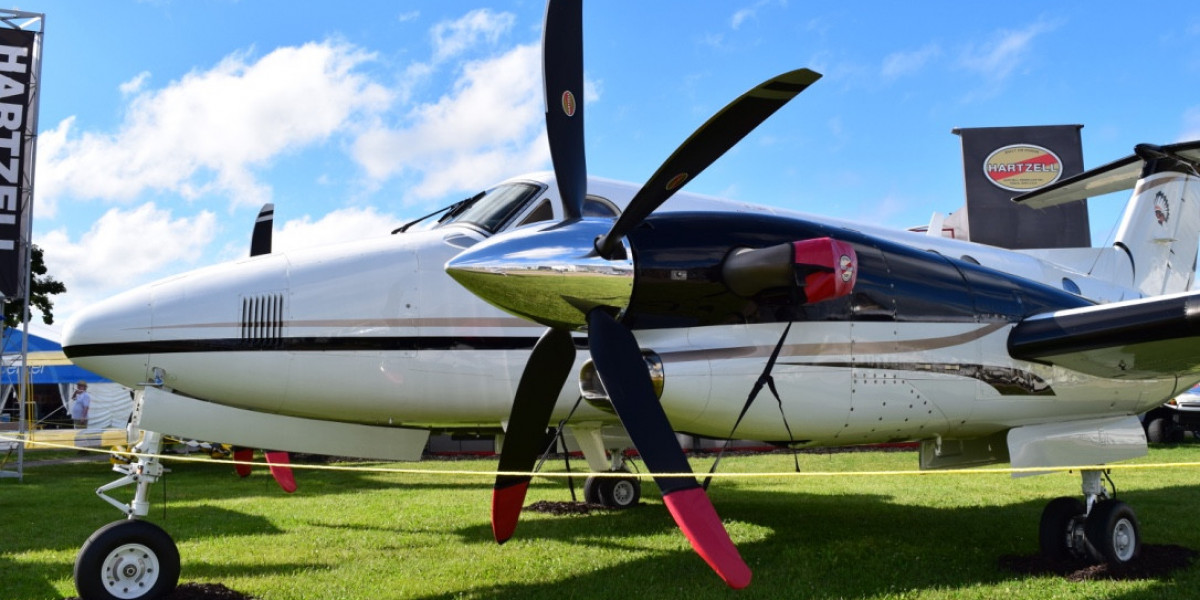The turboprop engine market is a critical segment of the global aerospace and aviation industry. Known for their fuel efficiency at lower speeds and altitudes, turboprop engines continue to be a popular choice for regional aviation, cargo transport, and military applications. As aviation technology advances and demand for regional air connectivity grows, the turboprop engine market is undergoing notable transformation. This article explores the current state of the market, emerging trends, key players, and the future outlook for turboprop engine development.
What is a Turboprop Engine?
A turboprop engine is a type of gas turbine engine that drives an aircraft propeller using a reduction gearbox. Unlike turbojets or turbofans, which produce most of their thrust from jet exhaust, turboprops generate the majority of their thrust from the propeller. This configuration makes them ideal for short-haul flights, typically under 600 miles, where efficiency and performance at lower altitudes are crucial.
Market Size and Growth Drivers
The global turboprop engine market has been steadily growing, supported by increasing demand for regional air transport, especially in emerging economies across Asia-Pacific, Latin America, and Africa. As of recent estimates, the market is projected to reach several billion USD by the end of the decade, growing at a compound annual growth rate (CAGR) of around 4% to 6%.
Key factors driving this growth include:
Regional Aviation Expansion: Governments and airlines are investing in regional connectivity to support economic development and improve accessibility in remote areas.
Military Modernization: Many nations are upgrading their defense fleets with turboprop-powered surveillance and transport aircraft due to the engines’ durability and lower operating costs.
Environmental Considerations: Turboprops are more fuel-efficient than jet engines for short distances, aligning with global efforts to reduce aviation emissions.
Industry Segmentation
The turboprop engine market can be segmented based on several factors:
Application:
Commercial Aviation: Regional airlines operating short-haul routes.
Military Aviation: Transport, surveillance, and training aircraft.
General Aviation: Private and charter aircraft.
End User:
OEMs (Original Equipment Manufacturers): Companies that build aircraft and integrate turboprop engines.
MRO (Maintenance, Repair, and Overhaul): A growing segment due to the need for regular maintenance of aging fleets.
Region:
North America: A mature market with significant defense and commercial aviation activity.
Asia-Pacific: A fast-growing region due to rising middle-class populations and infrastructure investments.
Europe and Latin America: Also showing steady demand, especially for short-haul and cargo operations.
Key Players and Competition
The turboprop engine market is highly competitive, with a few major players dominating the landscape:
Pratt & Whitney Canada: Known for its PT6 engine series, widely used in both commercial and military aircraft.
GE Aerospace (formerly GE Aviation): Offers advanced turboprop solutions, including those used in larger military applications.
Rolls-Royce: Provides engines for both military and regional aircraft.
Honeywell: Active in the smaller aircraft and defense segments.
These companies invest heavily in R&D to improve fuel efficiency, reduce emissions, and enhance reliability. Collaborations with airframe manufacturers and government contracts also play a key role in maintaining market presence.
Technological Innovations
Advances in materials, digital engine monitoring, and hybrid-electric propulsion are influencing turboprop engine development. Some notable trends include:
Lightweight Materials: The use of composite materials and advanced alloys to reduce engine weight and improve performance.
Digital Twin Technology: Enables predictive maintenance and operational optimization through real-time data monitoring.
Hybrid Propulsion Systems: Aiming to integrate electric components with conventional engines to cut emissions further.
Challenges Facing the Market
Despite promising growth, the turboprop engine market faces several challenges:
High Initial Costs: While turboprops are cost-efficient to operate, the upfront investment remains high for smaller operators.
Competition from Regional Jets: In some markets, turboprops compete with regional jets that offer higher speed and perceived passenger comfort.
Supply Chain Disruptions: Ongoing geopolitical tensions and material shortages have impacted production timelines.
Future Outlook
Looking ahead, the turboprop engine market is poised for continued growth, driven by sustainability goals, defense modernization, and increasing demand for regional connectivity. As technology evolves, future turboprop engines are expected to be more environmentally friendly, digitally integrated, and efficient. Manufacturers that can balance innovation with affordability are likely to lead the next phase of market development
Learn More : https://www.pristinemarketinsights.com/turboprop-engine-market-report







